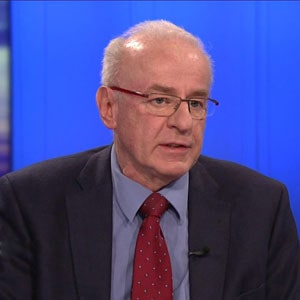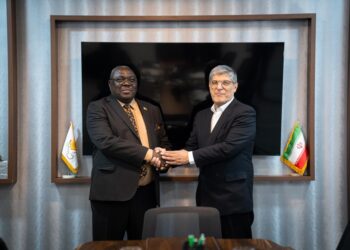Prof. Heinz Gärtner – Lector for Political Science at the Universities of Vienna and Krems
Peace
When considering the question of what peace is, it has become customary to distinguish between negative and positive peace. Negative peace means the absence of →violence and →war, while positive peace emphasizes positive elements, such as equality and justice. In the following definition, peace is defined negatively: Peace “exists in an international system (>system, international) when the >conflicts taking place within it are dealt with continuously without the use of organized military violence.” By referring to the importance of equitable distribution and welfare internally for external peaceful behavior, the positive dimension of the definition is added: Peace “can now be defined as a process pattern of the international system that is characterized by decreasing violence and increasing distributive justice.
If peace is not only defined negatively by the absence of violence and war a number of positive aspects can be emphasized, such as social issues (distributive justice and equality) and personal freedoms (personal liberty, human creativity), but also ecological aspects.
Johan Galtung describes positive peace as the absence of personal and structural violence. It is a peace that consists not only in the absence of international violence, but in the absence of personal violence and structural violence in all spheres of society. Steps to positive peace are the creation of organizations that link governments and people across national boundaries and to integrate the >states into a web of harmonious and cooperative relationships. Related to positive peace is the concept of nonviolence, which for Galtung specifically means nonmilitary >defense. For Sabine Jaberg, “peace and violence represent categorical opposites; while they are still intertwined, it is a matter of maximizing peace and minimize violence.” The logic of peace is thus oriented toward the goal of preventing and reducing violence. It also relies on cooperative conflict management. It therefore strives for de-escalation, victim protection and non-violent (dialogue-compatible and process-oriented) conflict transformation. The argument of a part of peace research that only strength leads to peace (“If you want peace, prepare for war!”), would only take over the argumentation pattern of those strategic studies, against which peace research would have originally competed. Thus, the discipline’s own aversion to violence would be lost and the security dilemma would (→security) be promoted.
This “strength-argument” was virulently discussed in peace research during the war in Ukraine after 2022 : should Ukraine be supported militarily until there is peace through war and violence? A complex-oriented peace research would thus lose its multi-perspective character and its multi-causal conflict analysis. Although the arguments may be formulated specifically about the Ukrainian war, they would, according to Sabine Jaberg, be elevated to a general “law” within peace research, appearing “in the face of threatening mega-violence […] any counter-violence would appear legitimized”.
Especially the “critical peace research” of the seventies emphasized the dimension of distributive justice. According to this, the “critical peace researchers … defined themselves as scientific partisans of people who, as a result of the unequal distribution of social and economic life chances within and between nations (i.e. by structural violence): of the exploited, of the socially discriminated against, and of those whose physical existence is directly threatened”. This definition of “critical peace research” goes beyond the definition of peace between states and borrows from Johan Galtung’s “structural violence”, thereby also posing the question of the cause of intra-societal violence.
Peace can also be defined as the ability to politically shape >conflicts or conflict management: Peace “is not the state of complete absence of political conflict but the sum of the abilities and instrumentalities to deal with them in other than violent ways.” A peace order “is a democratic order in which the danger of violent conflict does not (any longer) exist.”
War
Carl von Clausewitz observed that the war can come to an end not only when the enemy is absolutely crushed, but also when there are peace agreements (→peace). This observation applies equally to modern war . Also the war in Ukraine after February 2022 moved within this tension between military victory and a peace agreement. The two warring parties strived for a victory on the battlefield before considering a peace agreement. Between Carl von Clausewitz’s observation that war is pushes to the extreme and to a defeat of the enemy or a peace agreement, there is much room for shading. The war takes place in an atmosphere of “twilight” in which not only the “commander” but above all the observers move. Uncertainties are perceived as certainties. There are six structural reasons for the uncertainty of reporting in war.
Firstly, it is impossible to estimate what resistance the opponent will offer. In most cases, it is underestimated, and one’s own strength is overestimated. No one starts a warif the opponent is considered to be decisively superior. “We’ll be home for Christmas,” was the slogan for the soldiers who went to war in August 1914 that would last another four years. Russia began the invasion of Ukraine in 2022 with fewer than two hundred thousand servicemen and women.
If the expected victory secondly, smaller gains on the battlefield are exaggerated and also believed, and even proclaimed as an “act of destruction”.
Third, as the fighting intensifies, the image of the enemy becomes more negative, indifferent to what it was before. This is the beginning of what Carl von Clausewitz called the trinity of war. the trinity of war: Hatred, enmity, violence increases. Reporting multiplies these elements. Killing is now no longer a disgrace, but a virtue! The alternative is only to kill or to be killed. One has no choice. Killing is only self-defense.
Fourth, the will to negotiate is is waning. The responsibility is attributed to the opponent: He does not want to negotiate at all! Compromises are called betrayals, ceasefires a ploy to regroup the armed forces. There is no alternative to fighting.
In the further push to extremes, fifth, other elements come into play. Civilian targets are attacked, which was dismissed as propaganda. Nuclear weapons are brought into play, which in many cases, although a real danger, has been downplayed by Western reporting so as not to call into question the continuation of the fighting.
Sixth, information is simplified, shortened and reduced. There is no longer any doubt, evil is the cause and greed is the reason for war. Structural analyses of war are rejected and ridiculed. Transparency and war are opposites!
Wars always develop a momentum of their own that the reporting does not anticipate, and they unleash forces that the warring parties themselves can no longer control. can no longer control. The costs of war always exceed the expected gains.
Security
Security is a term that can be interpreted in many ways. The most general definition is that security is the absence of >threat against acquired economic, cultural, and moral .Acquired values, however, is an indefinite term and includes both the values of dominant >actors (>dominance) within the >states as well as within the state system (>system, international). Thomas Pankratz observes that security in this definition is not defined from itself, but in relation to something missing (absence of threat, dangers, risks).
International security can therefore be defined as a situation “in which the barriers and unfavorable conditions for waging →war to wage war are stronger than the favorable ones.” In the defined situation, according to Buchanan, alternatives to violent conflict resolution must be (→violence, >conflict, >conflict prevention, -resolution, -transformation) available in sufficient numbers, be they political, diplomatic, or legal. A security order is “an order of rules, institutions (>institutions, international), and instruments by which states, peoples, and people protect themselves against the danger of violence, especially wars.”
Security can be either the absence of threat or the >capability to to be able to repel threats. Therefore, there are also different views on the ways in which security can be achieved. Either, in order to increase security military capacities can be enhanced, or the environment in which threats can develop must be changed. Security thus has two dimensions: armed aggression (>attack) from within and from outside(→deterrence) (the negative dimension), on the one hand; and creating political, social, and economic conditions to build a lasting →peace (the positive dimension), on the other.






